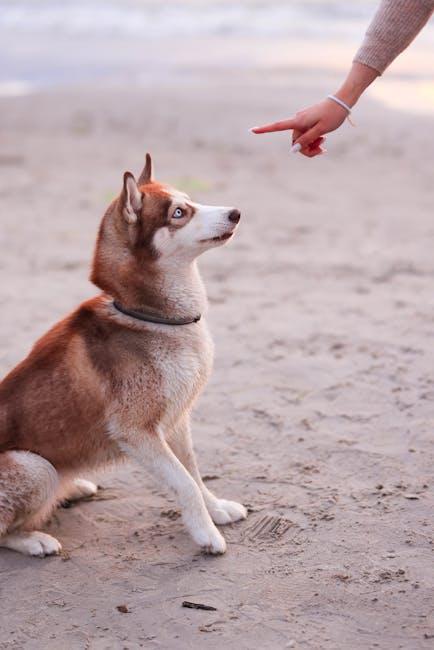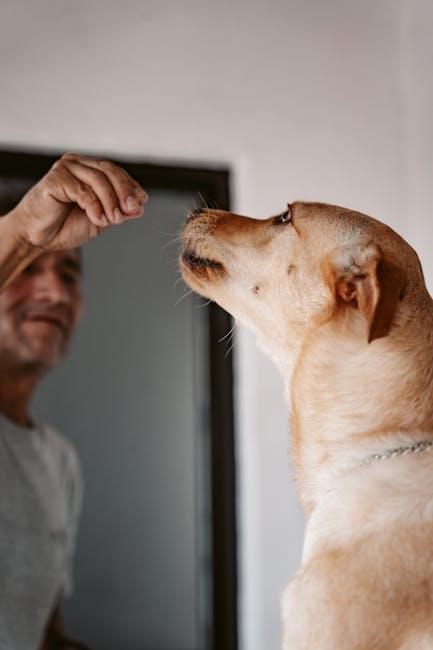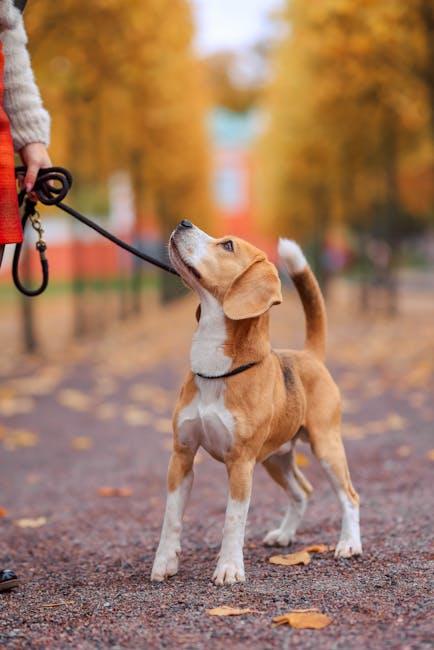Welcoming a new puppy into your home is a joyous occasion, filled with wagging tails, playful antics, and endless cuddles. However, amidst the excitement, it’s essential to lay the foundation for a harmonious relationship through basic obedience training. This guide is designed to gently steer you and your furry friend through the early stages of learning, ensuring that your pup grows into a well-mannered companion. With patience, consistency, and a dash of love, you’ll discover that training is not just about teaching commands, but about building a bond that lasts a lifetime. Let’s embark on this rewarding journey together, where every “sit,” “stay,” and “come” brings you closer to a lifetime of friendship and joy.
Creating a Strong Foundation with Basic Commands
Embarking on the journey of training your puppy is an exciting adventure filled with opportunities for bonding and mutual understanding. Establishing a strong foundation with basic commands is essential for fostering a harmonious relationship between you and your furry friend. At the heart of effective training lies consistency, patience, and positive reinforcement. Consistency helps your puppy understand expectations, while patience ensures that learning is a positive experience. Positive reinforcement, such as treats or praise, encourages your puppy to repeat desired behaviors.
- Start with simple commands: Focus on commands like “sit”, “stay”, and “come”. These are not only foundational but also crucial for your puppy’s safety.
- Keep training sessions short: Puppies have limited attention spans, so aim for sessions of about 5-10 minutes, multiple times a day.
- Use clear and concise cues: Choose one-word commands and stick to them. This helps your puppy associate specific actions with specific words.
- Be patient and persistent: Every puppy learns at their own pace. Celebrate small victories and continue to reinforce learning regularly.
By investing time and effort in these early stages, you’re not just teaching commands; you’re building a language that will enable you and your puppy to communicate effectively throughout their life. Remember, each training session is a step toward a well-behaved and happy companion.

Positive Reinforcement Techniques for Lasting Results
Incorporating positive reinforcement into your puppy’s training regimen can transform the learning experience into an enjoyable and rewarding journey. By focusing on encouragement rather than punishment, you create a nurturing environment that fosters trust and cooperation. Treats, praise, and play are powerful motivators that can reinforce good behavior and help your puppy associate obedience with positive outcomes. Whenever your puppy follows a command or exhibits desirable behavior, immediately reward them with a treat or affectionate words, reinforcing the connection between their action and the reward.
- Consistency: Be consistent with your rewards. Ensure every good behavior is met with a positive response to build a strong habit.
- Timing: Offer rewards immediately after the desired behavior to help your puppy make the connection.
- Variety: Use a variety of rewards to keep your puppy engaged and motivated. Mix treats with verbal praise and playtime.
- Gradual Reduction: As your puppy becomes more reliable, gradually reduce the frequency of treats, replacing them with praise and affection.
By emphasizing these techniques, you set the stage for a lifetime of good behavior and a harmonious relationship with your furry friend.

Building a Consistent Training Routine for Your Puppy
Creating a reliable and steady schedule is crucial for instilling good habits in your puppy. Consistency is key when it comes to training, as it helps your furry friend understand what is expected of them. Start by setting aside specific times each day for training sessions. Puppies thrive on routine, so keeping these sessions short, engaging, and frequent—around 5 to 10 minutes, several times a day—will help maintain their attention and reinforce learning.
To ensure success, incorporate a variety of activities that make training enjoyable for both you and your puppy. Consider the following elements to include in your routine:
- Positive Reinforcement: Reward your puppy with treats or praise when they follow commands correctly. This encourages them to repeat good behavior.
- Basic Commands: Focus on simple commands like “sit,” “stay,” and “come.” Consistent practice helps your puppy master these foundational skills.
- Playtime: Use play as a reward and an opportunity to bond. Interactive games can also serve as a natural extension of training.
- Patience: Remember that learning takes time. Be patient and understanding, and avoid showing frustration if progress is slow.
By weaving these practices into your daily schedule, you’ll not only nurture a well-behaved puppy but also strengthen the bond between you and your loyal companion.

Addressing Common Challenges with Patience and Understanding
Training a puppy can sometimes feel like a test of endurance, but with a little patience and understanding, you’ll find the process rewarding and fulfilling. Common challenges such as chewing, barking, and house training mishaps are all part of the learning curve. Instead of getting frustrated, it’s crucial to approach each situation with empathy. Puppies, like toddlers, are exploring their world, and these behaviors are their way of understanding their environment. When your puppy chews on your favorite shoe, for instance, remember that it’s not out of spite, but rather a natural instinct to soothe teething gums.
- Chewing: Provide plenty of chew toys and praise your puppy when they choose these over furniture or shoes.
- Barking: Identify triggers and calmly redirect your puppy’s attention with a command or a toy.
- House Training: Maintain a consistent schedule for bathroom breaks and reward your puppy immediately after they go outside.
By addressing these challenges with calmness and understanding, you’re not only teaching obedience but also building a foundation of trust and respect. Remember, patience today will yield a well-mannered companion tomorrow.

